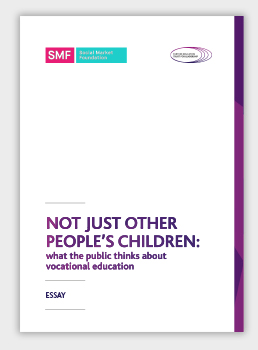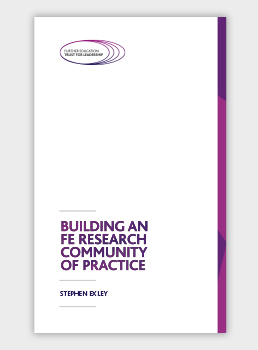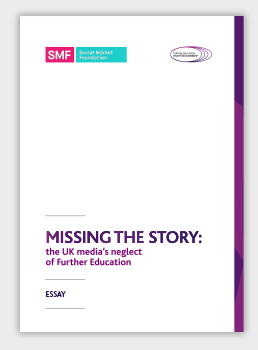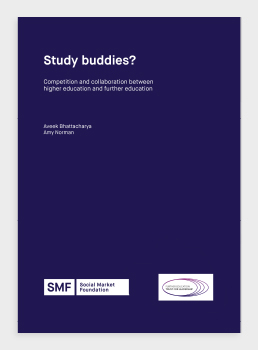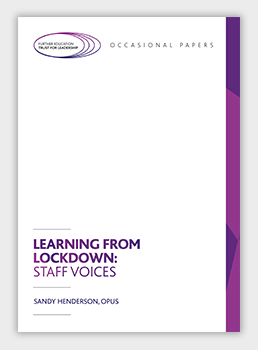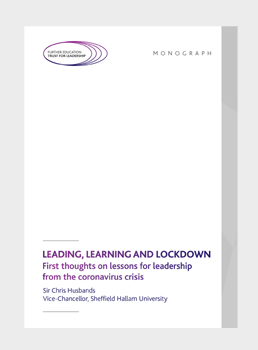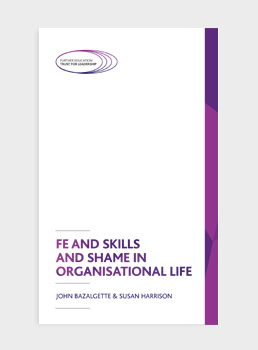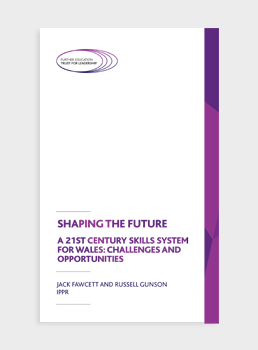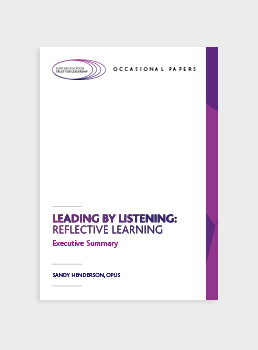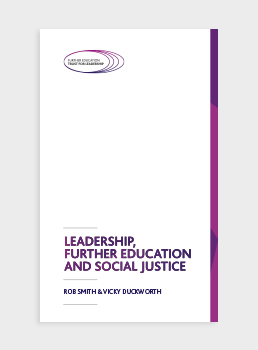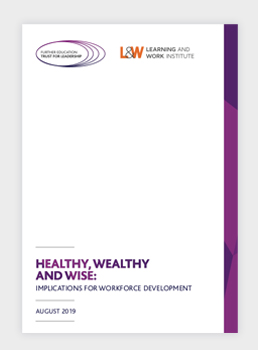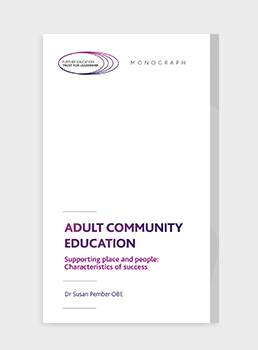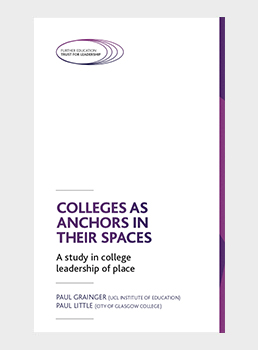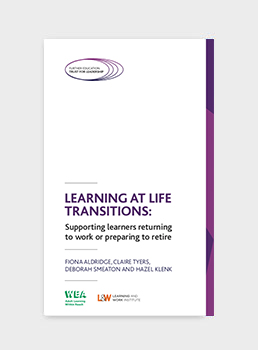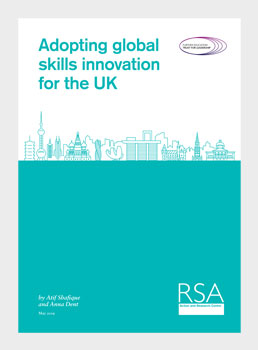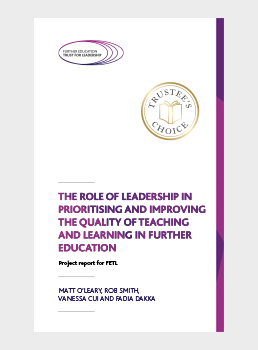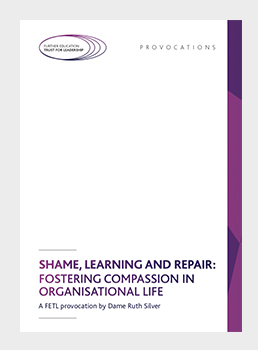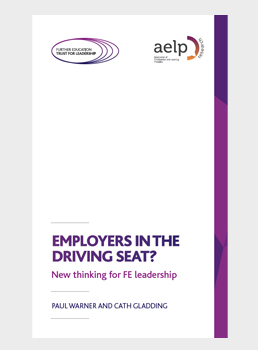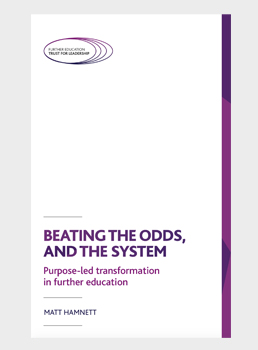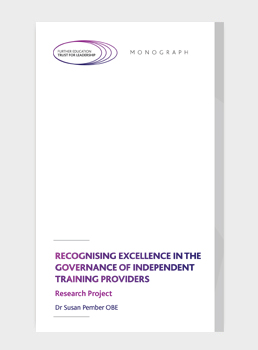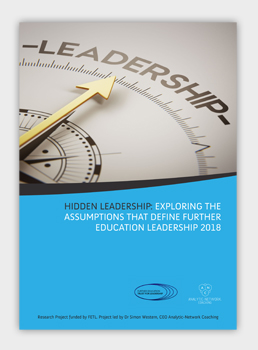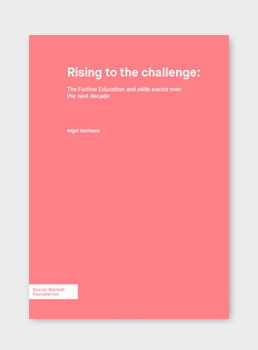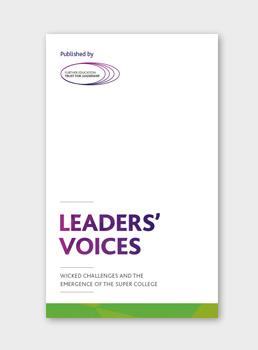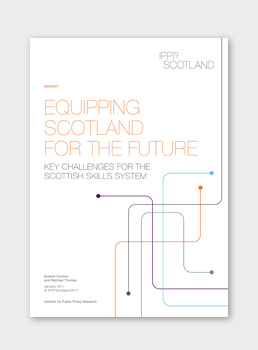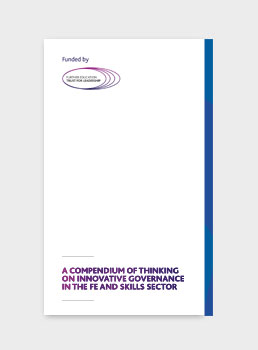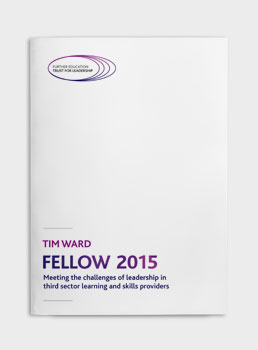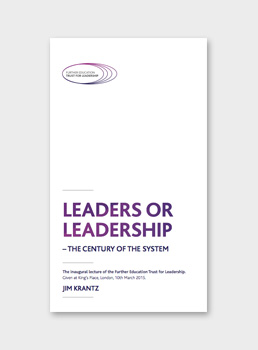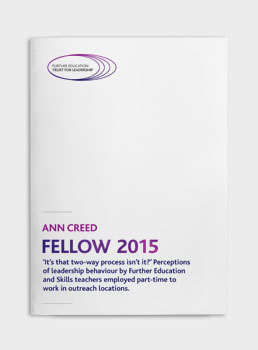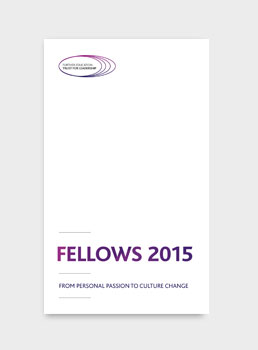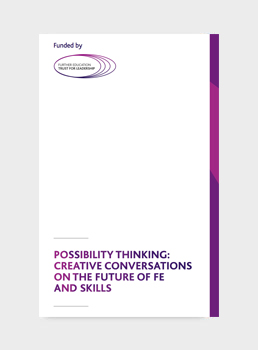
FE and the challenge of a ‘return to normal’
There is a lot of talk, at the moment, about the likelihood of a return to ‘normal’ in society. For FE, I wonder whether there is such a thing as normal, let alone whether a return to it is desirable.
What does the concept of normalcy entail for the sector, either as a point of departure or a destination? I am reminded of the old joke about asking for directions and being told: if I were you, I wouldn’t start from here.
This perspective is informed by what I learnt when conducting a series of ‘Listening Posts’ across England for FETL in 2019 with college leaders, staff and students. This equips me with no special wisdom or insight, only the superficial observations of a newcomer from a modest sample of colleges. Some of what I saw was a long way from the normal I expected, however.
My impression is that FE colleges are being a little short-changed by the families and schools responsible for their intake. Too many school leavers arrive not only with an insufficient base level of literacy and numeracy but also a shortage in the ‘life’ skills – such as common sense, independence, relatability or reliability – that would make them ready for the world of work. Here are a few comments from staff made during the Listening Post project:
“You’re not just teaching the subject, you are teaching morals, how to behave, life skills, resilience, how to interact with other people and, particularly the last 10 years, just how to have conversations with each other.”
“The kids come in; they can’t come on time; they have no basic communication skills. That’s why we are social workers.”
“The level of need that students have is beyond what people are used to.”
“The amount of students I have that are requiring support can be 60% of my classroom population.”
“I don’t know what’s happened but something has happened where the doctors are diagnosing ADHD, KDHD, YDHD… there is so much of it.”
“I’ve been teaching for about 5 or 6 years, and each year I’ve noticed there’s been a drop, a lack of common sense – and you can’t really teach common sense – but a lack of general understanding about things like telling the time.”
“Students come in with so many needs; they are partly disabled in terms of their social skills.”
Everyone starts out in life believing, at least for a time, the way things work in their own family is entirely normal: whose needs are prioritised, who has power and how it is exercised, what examples and standards are set, what behaviour gets rewarded or punished, what differences are tolerated, and so on. These norms become implicit parts of each child’s identity, and are then put to the test in the great big mixer that is school.
Through this mixing process, each student derives a sense of how easily they ‘fit’, or don’t fit, into society. Some aspects of their normality may become sources of pride for them and envy for others; others may be sources of shame and reproach. They are judged positively or negatively for how they look, talk, behave and draw attention to themselves, many aspects of which feel so normal that they are not aware of the judgements being invited. In social groupings networked via social media, it is not just that appearances matter, they can be the sole currency of a teenager’s worth.
How, in adolescence, we cope with these judgements, and cast others into the shadow of our own judgements, can leave scars that remain with us for the rest of our lives. In our social networks, the judgement centres around our looks and confidence; in school it centres also around our learning. By the time we get to college, our identity may have become unmoored from its original conception of family normality. We may be cut to shreds by a sense of our comparative disadvantages, flummoxed by our maladroitness, flattened by an avalanche of unscalable insufficiencies. The only normal we recognise may be an unrelenting pattern of rejection and alienation; the only pleasure we may get is from staying true to the identity of being a reliable misfit or screw-up. We may have become habituated to the idea that we can’t cope, won’t succeed and will always need rescuing. By 16, this stained way of thinking about ourselves is not going to disappear after just one high-temperature wash in the FE laundrette. Redemption is a lifelong project.
Much of this problem may be associated with an alarming rise in the proportion of young people in the UK reported to be suffering from mental health issues– a problem reported to have got six times worse in the 20 years to 2014[1] and now affecting one third of 15-to-18-year-olds[2]. Between 2016 and 2018, there was a one-third increase in the number of children receiving NHS treatment for mental health problems[3] – linked by experts to “increased pressure to do well at school, body image issues, the influence of social media and difficult family backgrounds”.
In the Good Childhood Index, published by the Children’s Society in 2019[4], children aged 10-17 rated their happiness in 10 separate aspects of their lives. School came bottom. The same report found that 14% of children had high depressive symptoms. Of 14-17-year-olds, 30% (predominantly girls) were worried or very worried about getting good grades and 35% (predominantly boys) were worried or very worried about finding a job.
There are two main systems for classifying mental health symptoms and diagnoses: ICD-10, produced by the World Health Organisation, and DSM-5, produced by the American Psychiatric Association. Each now identifies more than 300 mental and behavioural disorders. In both systems, the only diagnostic indicators that reference a mental state for any of the 300 disorders are feelings of guilt and worthlessness. By no accident, these feelings are also the predominant themes of all therapy – working with a patient’s disclosure that, however they might present themselves in public, they secretly scourge themselves with the thought that, in some shameful way, there is something about them that is not ‘normal’.
The symptom clusters of mainly behavioural effects associated with the 300 disorders have such a degree of overlap that you could match almost any patient to almost any disorder. Alternatively, you could match them all to one: depression. While it seems relatively easy to accept the proposition that low self-esteem (guilt and worthlessness) leads to depression and therefore, in one way or another, lies at the heart of most mental health issues for young people, it is much, much harder to understand why we would want to feel this way about ourselves. One definition of bullying that resonates with me is ‘being made to accept someone else’s definition of you’; in this case, it is a kind of bullying we do to ourselves, via our inner critic or superego. We do it because to be human is to differentiate, to compare. In the concept of normal, we are force-fed a discourse of conformity that finds too many of us wanting. Like a beaten dog, we then flinch in front of strangers, tail between our legs, anticipating the next punishment for a reason we don’t fully understand.
It hardly needs saying that, as university access has widened, many of the students who now enrol in FE are those who might not have found a place twenty years ago. As Generation Z moves through secondary school cementing its reputation for anxiety and depression, FE acquires an ever-increasing segment of students who acquire, through reinforcement by social media and the pressure of exam performance, a kind of ‘learned helplessness’ that leaves them depressed, anxious and unable to access strategies and solutions that are within their capabilities. The more FE adjusts to cope, the faster it morphs into a kind of social service. The more time and resources it has to divert towards getting students to the point where they feel up to the task of learning, the less there is left to be a technical and vocational training provider. Results dip. Government and Ofsted want to know why FE has messed up again.
Part of the problem may be that secondary schools, whose reputations seem to depend solely on pass rates and grade percentages, tend to employ a ‘normal’ method of teaching that does not work for everyone. Indeed, those whom it suits least may well form a large part of the contingent who make the move into FE, to resit their Maths and English.
The teaching profession has come in for a lot of criticism for its lack of teaching during the lockdown. Parents rightly question the role of teachers if their only input is to instruct students to print off a worksheet from the internet, complete the questionnaire and self-mark their answers. For secondary school teachers to argue for the adequacy of such an approach is to promote their own redundancy. As everyone in FE knows, the oversight of learning is not all there is to the job. Teaching is a social service, not least because, in one core respect, it has exactly the same goal as therapy: to help people stop getting in their own way. There isn’t a normal way to achieve this because there isn’t a normal set of human challenges to overcome. It is a painstaking and highly individualised process: each student has to figure out what works best for them.
What is special about FE is that it doesn’t deal in normal, so let there be no talk of a return to it.
– Sandy Henderson, Independent researcher, writer, consultant and coach
[1] https://www.theguardian.com/society/2018/sep/11/mental-health-issues-in-young-people-up-sixfold-in-england-since-1995
[2] https://www.actionforchildren.org.uk/news-and-blogs/whats-new/2018/october/one-third-of-15-to-18-year-olds-are-suffering-from-mental-health-issues/
[3] https://www.theguardian.com/society/2018/jul/12/sharp-rise-in-under-19s-being-treated-by-nhs-mental-health-services
[4] https://www.childrenssociety.org.uk/sites/default/files/the_good_childhood_report_2019.pdf


